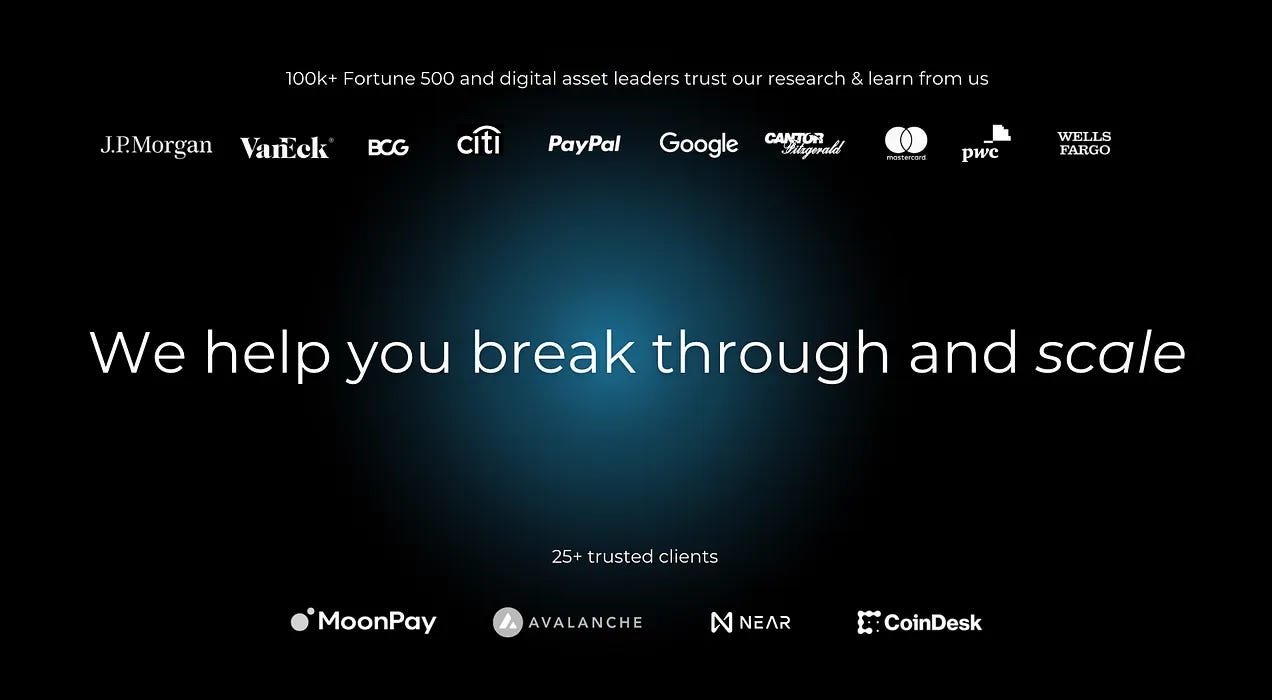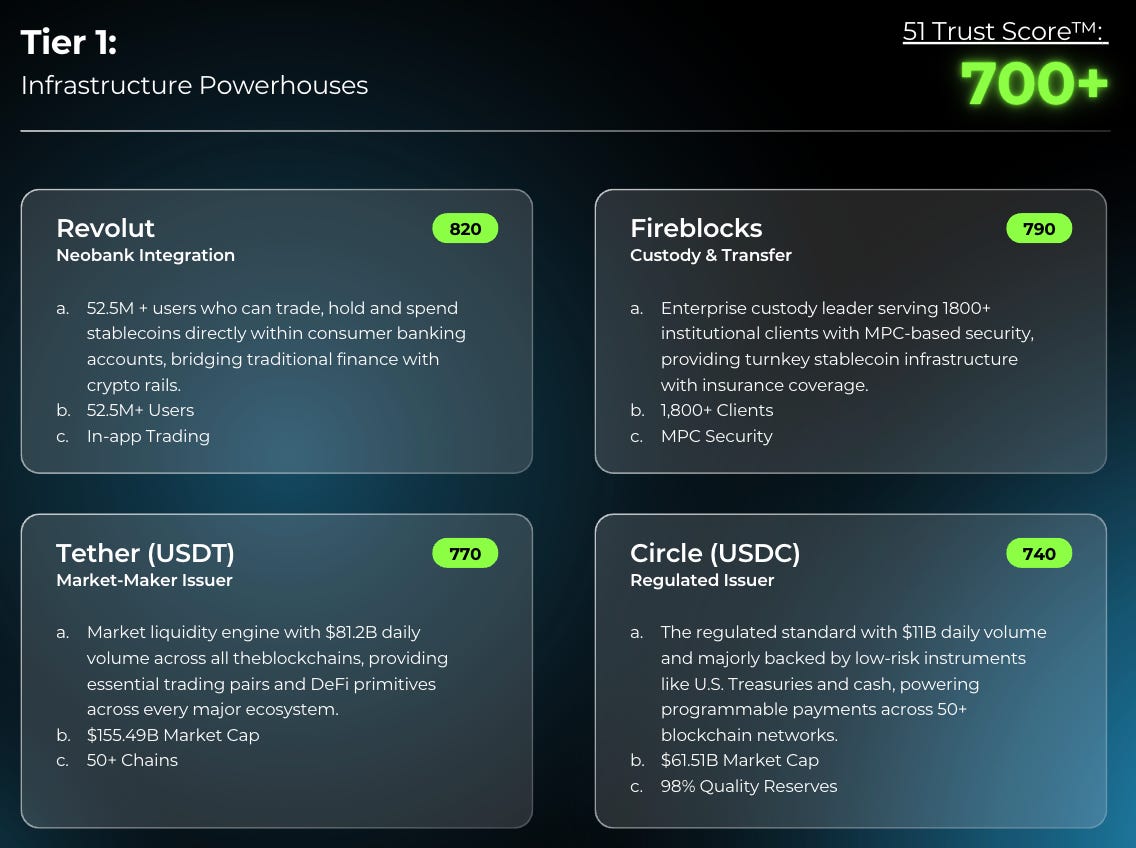137: Goldman goes onchain
Hey, it’s Marc.
It’s been just a week since the U.S. passed three major digital asset laws and the world is already reacting. Everyone from Western Union to China is suddenly moving faster on stablecoins. While banks and financial institutions are exploring the space, economists are flagging challenges (“The rise and risks of stablecoins”, FT).
If you’ve missed it: Download our biggest stablecoin report yet.
Also, this week:
Goldman Sachs and BNY Mellon activate tokenised MMF
U.S. bans CBDCs
Tether prepares for U.S. comeback
Western Union explores stablecoins
Telegram launches crypto wallet in the U.S.
Trump unveils AI action plan
And much more.
PS: We’re releasing our “Stablecoins in Commerce” report. Want to partner & expose yourself to 200k+ digital asset leaders? Reach out.
Top Boardroom Reads This Week
Digital Assets
Report: Money Movement 2.0 (51)
State of Stablecoins 2025 (Messari)
The stable door opens: How tokenised cash enables next-gen payments (McKinsey)
The rise and risks of stablecoins (Financial Times)
Stablecoin Liquidity Risk Under the GENIUS Act: An Institutional Playbook (Noah)
Finance is Ready for a Blockchain Reset (Financial Times)
The state of stablecoins in cross-border payments: 2025 industry primer (FXC)
How Stablecoins are Changing the Way Money Moves (Morgan Stanley)
The Big Loser From the ‘Genius Act’ Is $156 Billion Crypto Giant Tether (WSJ)
From Uncertainty to Dominance - “Crypto Week” in D.C. - Stablecoins, CLARITY, and Anti-CBDC Bills (Pantera)
The world should follow Trump’s lead on stablecoins (The Economist)
AI
Apple Intelligence Foundation Language Models Tech Report 2025 (Apple)
AI Breaks the Chinese Room (Paul Siemers)
Prompt Engineering for LLMs (O’Reilly)
OpenAI’s Agent (51)
The dark horse of AI labs (The Economist)
Are you an AI Operator? 👉 Subscribe to our AI newsletter.
Power Moves
Goldman & BNY Tokenise $7.1T Cash Market
Goldman Sachs and BNY Mellon launched tokenised money market funds. BlackRock, Fidelity, Federated Hermes are already signed up. It’s live on Goldman’s private blockchain, with BNY clients now able to hold yield-bearing tokens backed by traditional MMFs. [NEWS] [ANALYSIS]
So what? $2.5T has poured into money market funds since 2022. Tokenised MMFs combine 24/7 liquidity, faster settlement, and yield, turning them into programmable “cash equivalents”. For the first time, money market funds can be used as native financial primitives opening doors to automated collateral flows, intraday liquidity optimisation, and programmable treasury.
Tether Eyes a U.S. Comeback
Tether will enter the US with its own stablecoin. Its CEO, Paolo Ardoino, says the company is “well in progress” on a U.S. domestic strategy, focused on payments, interbank settlement, and trading. It has been sidelined since its $60M settlement with NY authorities in 2021. [NEWS] [ANALYSIS]
Why it matters: Love it or hate it, Tether is still the $150B gorilla of the stablecoin market, commanding 70% market share and daily volumes that outpace Visa. Now, Circle gets a serious US competitor with $13B in profits backing them (Circle made $156 million on $1.7B in revenue in 2024). On top of that: The US has a strategic interest in bringing the world's largest stablecoin issuer onto their home turf, as it brings the world's largest existing Treasury buyer under US’s regulatory control.
👉 We are going to release our flagship report on the “Digital Asset Treasuries.” Want to partner & expose yourself to 200k+ digital asset leaders? Reach out.
Messaging + Money: Telegram Turns into a Super App
Telegram launched its built-in self-custodial crypto wallet (TON Wallet) to its 87M U.S. users: no download required, no seed phrases to memorise. This follows 100M+ global activations and a new MoonPay partnership enabling zero-fee crypto purchases inside the app. [NEWS] [ANALYSIS]
So what? Telegram’s move turns chat into a programmable payment layer, embedding a financial OS into a social graph. Regulatory clarity in the U.S. and this launch signal how the consumer payment landscape is changing, and now messaging platforms are becoming a financial infrastructure.
House Passes Bill to Ban a U.S. CBDC
The U.S. House passed the Anti-CBDC Surveillance State Act in a 219–210 vote, banning the Fed from issuing a central bank digital currency without congressional approval. It also cements Trump’s executive order halting CBDC development. If the Senate backs it, the U.S. will formally reject state-run programmable money, clearing the path for regulated stablecoins and tokenised deposits to take the lead. [RELEASE]
So what? This is the strongest anti-CBDC move by any major government and now it’s law. The U.S. is signalling that private stablecoins and commercial banks, not government-issued digital money, will drive innovation.
Meanwhile, the BIS warns that letting private firms issue competing stablecoins risks history repeating itself. Even with guardrails like the Genius Act, governments may still be forced to backstop failures, just like with banks.
That’s why regions like the EU and China are skipping the risk altogether and building public, central bank–issued digital currencies.
News Flash
Uber taps Bitcoin and Stablecoins for payments. Link
Citadel warns SEC: don’t let Coinbase bypass equity trading rules. Link
PayPal’s new wallet, PayPal World, links local wallets globally using fiat rails. Link
WisdomTree launches USDW stablecoin for retail and institutional users. Link
Square now lets 4M merchants accept Bitcoin via Lightning Network. Link
Western Union eyes stablecoin integration. Link
👉 Get your brand in front of 35,000+ decision-makers — book your ad spot now.
Top Vendors This Week
👉 We’re tracking 100s of blockchain vendors so you can find the right vendors, partners, and bet on the right tech.
That’s all for now, folks.
Take care
– Marc & Team






